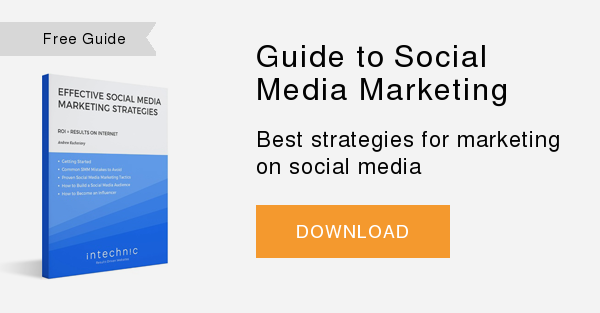How to Optimize Your Website Content for Sharing on Social Media
 Social media optimization (SMO) is the kindred cousin of search engine optimization (SEO). It is the practice of optimizing a website, specifically its content, for sharing across social media networks. As social media plays an increasingly integral role in search engine rankings, with likes, follows, and +1s impacting links’ inclusion and hierarchy in searches, SMO and SEO are syncing up more than ever before. As Google’s algorithms become increasingly intelligent and complex -- Google’s recent Hummingbird update is based on semantic search and incorporates the bigger picture into your search query, including your search history, location, and the holistic meaning of your query, as opposed to just the chain of words you type in -- it’s becoming crucial to provide site visitors and prospective visitors with content of the utmost quality that’s perfectly primed for sharing on social media. As with SEO, SMO is simple in concept but can be complex in execution, as every website has myriad parts working together to function as a digital machine. It can be helpful to think of SEO in terms of keywords, and SMO in terms of content. The end goal is to implement changes in your site so it’s more highly visible across social media searches, more frequently linked to by reputable sources, and more often engaged with on social networks. No longer is it sufficient to optimize your site for certain keywords and call it a day. The phrase “social media optimization” was first used in 2006 by Rohit Bhargava in his article 5 Rules of Social Media Optimization, but much has changed in the past seven years. Below, we present an up-to-date guide to optimizing your website content for sharing on social media.
Social media optimization (SMO) is the kindred cousin of search engine optimization (SEO). It is the practice of optimizing a website, specifically its content, for sharing across social media networks. As social media plays an increasingly integral role in search engine rankings, with likes, follows, and +1s impacting links’ inclusion and hierarchy in searches, SMO and SEO are syncing up more than ever before. As Google’s algorithms become increasingly intelligent and complex -- Google’s recent Hummingbird update is based on semantic search and incorporates the bigger picture into your search query, including your search history, location, and the holistic meaning of your query, as opposed to just the chain of words you type in -- it’s becoming crucial to provide site visitors and prospective visitors with content of the utmost quality that’s perfectly primed for sharing on social media. As with SEO, SMO is simple in concept but can be complex in execution, as every website has myriad parts working together to function as a digital machine. It can be helpful to think of SEO in terms of keywords, and SMO in terms of content. The end goal is to implement changes in your site so it’s more highly visible across social media searches, more frequently linked to by reputable sources, and more often engaged with on social networks. No longer is it sufficient to optimize your site for certain keywords and call it a day. The phrase “social media optimization” was first used in 2006 by Rohit Bhargava in his article 5 Rules of Social Media Optimization, but much has changed in the past seven years. Below, we present an up-to-date guide to optimizing your website content for sharing on social media.
1. Invest in High-Quality Content
It’s simple: the stronger your content is, the more people will want to share it. You wouldn’t slap together a half-baked website or e-newsletter, would you? Neither should you pay only half a mind to the content you’re promoting on your site and across your social channels. Invest in well-written (or well-captured), relevant, on-brand blog posts, photos, and videos, and you’ll see the returns in your analytics.
2. Diversify Your Content
Social media moves at such a rapid pace that capturing readers’ and viewers’ attention is a constant challenge. Draw them in with a wide range of types of content, from great blog posts to fantastic visuals, from informative infographics to intriguing data visualizations. Give readers options for how to consume your content, perhaps publishing a companion podcast for your latest white paper or compiling images from a recent event into a great video.
3. Shorten your Blog Post Headlines
Shorter headlines give users more characters to share your articles on Twitter. They also are more likely to grab your reader’s attention and convey a sense of urgency, triggering the desire to read and share the article. Remember your headline will be seen not just on your website, but in search engine results, in Facebook newsfeeds, underneath Pinterest pins, and more.
4. Make Them Catchy
If you spend enough time on the Internet, you’ll notice that much of any industry’s content is a repackaged version of the same news or ideas. For example, the day of the Twitter IPO, every single technology blog and website were covering that fairly narrow-in-scope news item. There are only so many ways to spin the same topic, so make sure you utilize your headline to stand out from the virtual crowd. The catchier your headline, the higher the likelihood of a click or share. Which of these two headlines would you be more likely to click on in a tweet? “The Life Of The Hashtag Before Twitter [INFOGRAPHIC]” vs. “History of Hashtags [INFOGRAPHIC]”?
5. Give Images the Weight and Consideration They Deserve
There’s a reason Pinterest and Instagram exploded in popularity, and the fastest-growing app in the entire world is Vine. Visual content is the way of the future, not to the exclusion of written content but as its complement. Spend extra time obtaining high-caliber photography or video for your website and you will see dividends. Simply increasing pixel width of photos so they span the entire width of your blog template can increase clicks and shares. When selecting an image for a post, bear in mind that photo will be seen not just by site visitors, but when shared on Facebook, Pinterest, LinkedIn, and Google+ (and Twitter if you’ve validated your site for Twitter Cards).
6. Make Sure Social Sharing Buttons are Prominent on Your Homepage and on Individual Pages
Social sharing tools should be deeply enmeshed in your site architecture. You want to make it as easy as possible for readers to share your content with one click. It might be worth experimenting with different styles to see what works best: placing the sharing buttons in your site’s footer vs. the header, rigging them to hover as users scroll down the page, etc. Give your visitors the ability to share your content on a silver platter.
7. Include Number of Shares for Each Button to Demonstrate Social Proof
Make your blog a “brag book” for your business by displaying the tally icon on social sharing buttons. If a post touts the fact that it has garnered 50 Facebook likes, that’s the equivalent of 50 unsolicited client endorsements for free. Moreover, other users are more likely to share your content if they deem it popular.
8. Encourage Readers to Leave Comments
What better way to encourage sharing of your content on social media than by literally asking people for their thoughts? A great way to cultivate social action on your website is by ending blog posts with a thought-provoking question or one that prompts readers to chime in with their opinion. Bonus points if you’ve integrated Facebook comments into your site.
9. Make Access to Content Easy and Linkable
If it’s clicks, shares, and links you want, make your blog posts, white papers, presentation, eBooks, podcasts, and videos organized and clearly labeled on your website. Give people as much to link to as possible by, say, bundling a white paper and relevant blog posts, or aggregating external content from industry influencers in a useful way.
10. Target Your Readers’ Emotions
The #1 way to encourage the content you create and host on your website to go viral is by inducing an emotion in your site visitors. Whether it’s awe, anger, joy, surprise or fear, emotional arousal triggers the desire, even the need, to share or spread a message. For every article you write, video you produce, podcast you record, or infographic you design, keep in mind how you want your readers to feel when they encounter it. Do you want to impress them with “101 Tips for Dominating Pinterest”? Do you want to frighten them with “The #1 Way You’re Losing To Your Competitor in Marketing”? If there’s no emotional component to your website, visitors are missing out. To conclude, as with any website optimization program, be sure to define your website objectives. Do you want to increase traffic? Strengthen your site’s credibility? Make more sales? Set goals, measure your progress, and adjust as necessary.






